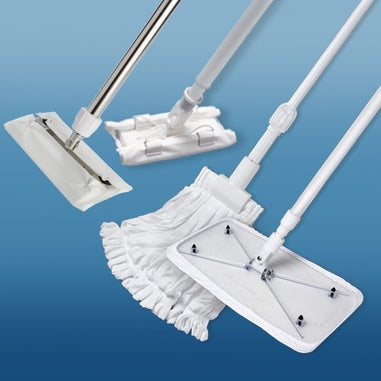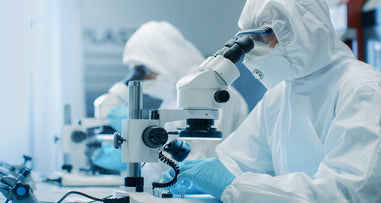- No products in the cart.
Everyone is aware of what PPE is. It stands for personal protective equipment, which is protective clothing. Examples of PPE are helmets, goggles, shoe covers, or any special equipment designed to protect the wearer's body from infection or injury.
While using such equipment, it is highly mandatory to clean them before using it the next time. However, some equipment like headgear can be cleaned even after a month or so. Many people don't understand how to maintain and keep these pieces of equipment clean and how to wash them correctly.
Well, don't worry. We have brought you some easy and simple tips to help you with cleaning PPE without any more difficulties. The following are the most commonly used PPE types of equipment, so here are ways to ensure they are clean when you wash them.
Gloves
Gloves come in different materials. Thus it would not be fair to say they all can get cleansed the same way. Each material will need a different type of detergent to wash off any dirt and germs from it. Here are examples of different gloves and how you can wash them properly.
-
Leather Gloves: A simple dry cleaning will be enough. Using soap or water will ruin the material.
-
Nylon Gloves: Make sure to use warm water, and you may wash it with regular detergent. Always tumble dry at low or no heat.
-
Wool Gloves: Don't use hot water; always use cold water only with a mild detergent and gently wash it.
-
Cotton/Polyester gloves: Warm water is needed and regular detergent. Always tumble dry at medium heat.
-
Coated Gloves: Wash in cold water and use a mild detergent. Make sure to tumble dry at low or no heat.
-
Latex Gloves: Best to use a new pair each time. They are difficult to wash, and, once washed, aren't as reliable as they were before.
Footwear
Cleaning footwear is a bit easy. You'll need a cloth dipped in warm water. Go ahead and use that cloth to scrub the dirty areas gently. Use the water you dipped the cloth in to rinse the footwear completely. It would be better to avoid detergents and soaps as they can reduce the water-resistance of any material.
Headgear
Headgears, like hardhats, don't need cleaning every day. A good cleaning once a month is more than enough. All you have to do is soak the equipment in a solution made from the warm water and a little amount of soap for about 10 minutes. Once the time is up, use clean water to rinse the equipment and allow it to dry out.
Legwear
There are multiple ways of cleaning legwear, depending on what type of equipment it is and what material its made from. The two most commonly used methods of washing legwear are as follows:
A good wash from hands is more than enough for some materials. All you'll need is a cloth and warm water. After a good rubbing and scrubbing, all the dirt should wash away, and any bacteria should die.
The second method is for the material that is a bit difficult to wash with your bare hands. You'll have to place the material in a tub full of water and soap for about an hour, at least. After the time is up, you can take out the legwear and wash it clean with water. This should easily kill any germs and remove any dirt from them.

Eyewear
People are very cautious when it comes to cleaning eyewear because they fear if any germs are left behind, it could damage their eyes. Well, the truth is any equipment, if not appropriately washed, can cause infections or even severe diseases. For this reason, cleaning them is of utmost importance.
Cleaning eyewear is not time-consuming at all. All you'll need is a soft cloth and warm water. It would be even better if you used soup. This will help in removing any dust that causes unclear vision. However, some eyewear are too complicated to wash with simple techniques. The manufactures will mention the ways to clean that particular equipment properly.
Conclusion
As you can see, washing PPE isn't a hassle and is actually very easy if you use the right resources.
For over 40 years, Lab Pro has been committed to providing critical Personal Protective Equipment PPEs and supplies in California. Visit the biggest Lab Supply showroom in California, or contact us online or at 888-452-2776.












































